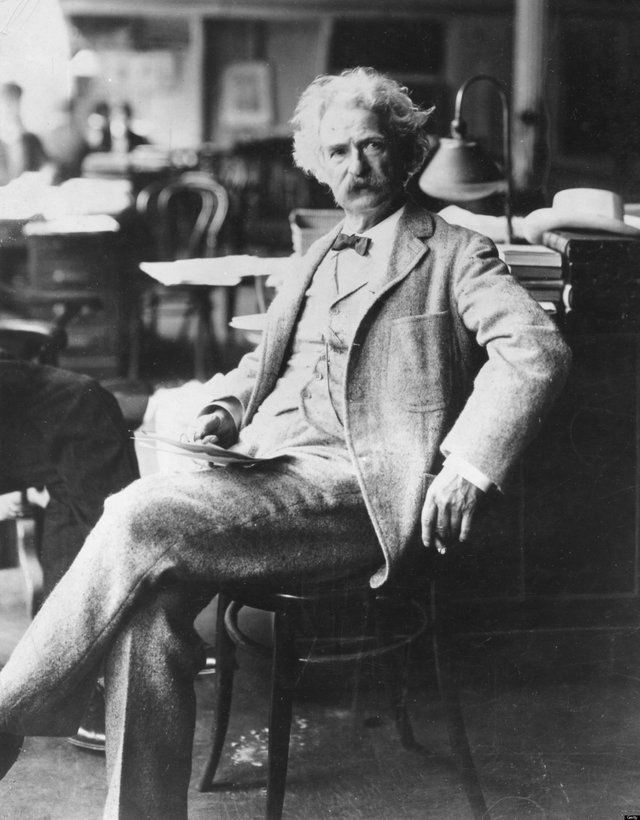Mark Twain’s Hoe Cakes

Portrait of American author Samuel Clemens (1835 – 1910), better known as Mark Twain, as he sits in a chair, late 19th century. (Photo by PhotoQuest/Getty Images
Mark Twain, adored the abundance of America’s plate. He even dreamed of it. He found the food in Europe “as tasteless as paper.” He longed for the food of home, like “Saratoga potatoes. Hot wheat-bread, Southern Style. Radishes. Baked apples, with cream. American butter. Hominy. Boiled onions. Turnips. Green corn, cut from the ear and served with butter and pepper. Stewed tomatoes. Hot hoe cakes, Southern style. Buckwheat cakes.” Twain was exuberant and, it seems, ravenous — his list goes on for pages.
So much of what Twain — and we — love about regional cuisine starts with regional produce. But according to the United Nations Food and Agriculture Organization, since Twain died, we’ve lost more than 93% of our native seed varieties.
Slow Foods USA’s Ark of Taste works to reestablish more than 200 regional American foods in danger of disappearing from our plates for good from loss of biodiversity or other environmental damage. Nonprofits like Seed Savers Exchange and United Plant Savers are dedicated to rare plants and produce conservation. But they can’t do it alone.
Visiting your local farmers market makes preserving rare and regional produce easy — and a delight. Choose local produce at its seasonal summer peak. Value it. Source it. Cook it. Eat it. It’s a positive action that rewards you with every bite. Even in today’s world of corporate food and standardized meal kits, you know authentic when you see it and you know it when you taste it. We all have a stake in what we eat, in keeping America’s plate as big and diverse as the one Twain celebrated
HOT HOE CAKES, SOUTHERN STYLE
For humble corn cakes born of necessity, hoe cakes inspire a lot of passion. George Washington loved them, as well as Mark Twain.
They’ve also inspired a lot of controversy. They may or may not have been originally cooked on hoe over a fire (skillets — big improvement). They seem to be related to johnnycakes aka journeycakes, food to be made on the road, or even Shawnee cakes, a Native American staple. But no one’s saying for sure.

At their essence, hoe cakes are no more than cornmeal and water. Ahh, but the devil is in the details. For best results, boil the water and use stone-ground white cornmeal, which has finer, softer particles than yellow, which has a slight grittiness. White cornmeal gives your hoe cake more connection with the pan. The greater the cake-to-pan connection, the crispier the crust. The pleasure of hoe cakes lie in their crunchy exterior.
They’re so simple, so addictive, every region along the Atlantic claims them for their own and puts their own unique spin on the recipe. In Rhode Island, they add milk to the batter. In some places, they add mayonnaise (No. Just no). What Twain longed for were hoe cakes Southern style. Here they’re served with heirloom summer corn and tomatoes. They’re also plenty good with butter and syrup.
Mark Twain’s Hoe Cakes
Ingredients:
2 cups boiling water
1-1/2 cups stone ground white cornmeal
1 teaspoon sea salt
1 teaspoon sugar
grape seed or other neutral oil for pan frying *
Method:
Combine cornmeal, salt and sugar in a heatproof bowl.
Add about 1/2 cup of the boiling water and stir, until mixture becomes sandy.
Add remaining water in a stream and continue stirring, until mixture is smooth and the consistency of soft polenta (which is basically what it is).
Cover batter and let it rest for 10 to 15 minutes at room temperature.
Lightly oil a skillet and heat over medium-high heat. Let it get good and hot. Then drop the batter a tablespoon or so at a time, forming thick pancakes about 3 inches across.
Lightly smooth with a spatula or the back of a wooden spoon. Don’t crowd the pan and don’t rush a hoe cake.
Let them cook, unassisted, for 6 to 8 minutes, so their bottoms crisp. Flip and continue cooking, about 5 minutes, or until hoe cakes are set and pale golden.
Remove from skillet and place on a warmed plate.
Give the skillet another slick of oil, if necessary and dollop on the remaining hoe cake batter.
Best served at once.
About the Author:
Ellen Kanner is the award-winning author of Feeding the Hungry Ghost: Life, Faith and What to Eat for Dinner ( VegNews’ 2013 Book of the Year, PETA’s debut Book of theMonth Club pick), Huffington Post’s Meatless Monday blogger, Miami Herald syndicated columnist the Edgy Veggie and soulful vegan writer and recipe developer for numerous publications.
Through her personal food consulting service Veg Therapy, she guides people to make more conscious food choices. With her plant-based dinners through EatWith she shows people how delicious plants can be.
Ellen believes that food is the great connector, because however different we are, we all need to eat. An ardent advocate for sustainable, accessible food, she serves on multiple Miami boards.
This post originally appeared on Artisans List Blog.
✅ Enjoy the vote! For more amazing content, please follow @themadcurator!